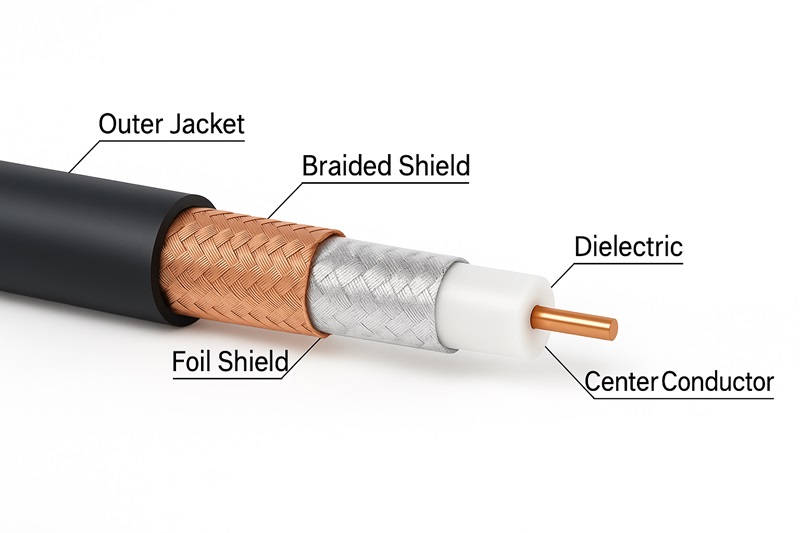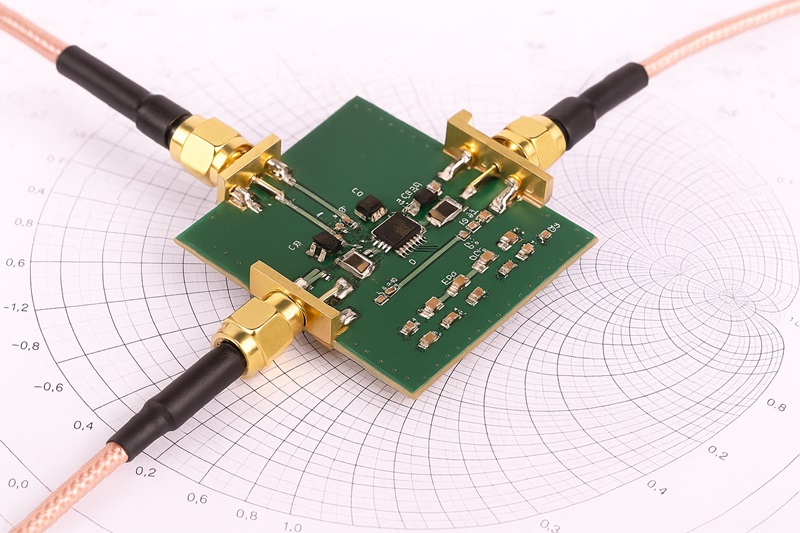Radio frequency cables (commonly known as RF cables) play a vital role in telecommunications and electronic equipment. RF cables are designed to operate at high frequencies with minimal loss and without interference. These specifications are crucial in applications such as television broadcasting, wireless communications, satellite communications, and radar systems.
RF cables are essentially transmission lines used to carry electromagnetic signals between components or instruments in a system. They are carefully crafted to possess unique properties that promote efficient signal propagation, from preventing signal degradation to facilitating high-fidelity impedance matching and providing waterproof shielding to protect against external interference.

radio frequency cable
The core structure of an radio frequency cables consists of a center conductor, insulation, a protective shield, and an outer protective armor. The center conductor, primarily made of copper or aluminum, provides electrical conductivity. The insulation (whether polyethylene or a foam dielectric) surrounds the center conductor to prevent signal loss or interference. The cable also includes a shield, typically made of a braid or foil material, to block external interference and reduce signal leakage. Additionally, the outer protective jacket provides physical protection and insulation.
Types of RF Cables
There are many different types of RF cables, each designed for specific frequency ranges and requirements. Commonly used are coaxial, triaxial, and waveguide cables, each with varying construction, impedance, and power handling capabilities. Therefore, choosing the right radio frequency cable for your application is crucial.
1. Coaxial Cable: Coaxial cables are the most common type of RF cable. Their inner conductor is surrounded by a protective insulator, while the outer conductor or shield is enclosed. This design helps reduce signal loss and interference, making coaxial cables ideal for high-frequency applications. They are widely used in telecommunications, television broadcasting, computer networks, and many other fields.
2. Twinaxial and Triaxial Cable: Twinaxial cables have two center conductors, while triaxial cables have three. This construction provides better noise suppression and faster data transmission than coaxial cables. Twinaxial cables are commonly used for high-speed data transmission and computer networks. Triaxial cables are suitable for precision video and measurement systems.
3. RF Cable Assemblies: Both ends are equipped with connectors. The quality of these connectors is critical to performance. Custom radio frequency cable assemblies can be made to meet specific needs, offering flexibility and optimized performance.
Each type of RF cable has its advantages and considerations. When selecting the right cable for a specific application, factors such as frequency range, power handling, impedance, and cost all affect the cable's lifespan. It's crucial to check relevant standards and specifications to ensure compatibility and optimal performance.

radio frequency cable
Key Performance Parameters of RF Cables
1. Frequency Range: Different types of radio frequency cables support different frequency bands. The higher the frequency, the higher the cable performance requirements.
2. Insertion Loss: Lower loss means higher signal fidelity. High-quality cables can significantly reduce high-frequency signal attenuation.
3. Standing Wave Ratio (VSWR): A low VSWR reduces signal reflections, maintaining system stability and is particularly suitable for high-frequency communication systems.
4. Characteristic Impedance: 50Ω or 75Ω are common standards. Improper matching can affect signal integrity and power transmission.
5. Shielding Performance: A good shielding structure effectively resists electromagnetic interference, improving the system's signal-to-noise ratio and reliability.
6. Flexibility and Environmental Adaptability: In environments with limited space or dynamic wiring, cables must possess excellent flexibility, high-temperature resistance, and corrosion resistance.
RF Cable Applications
1. Communications Equipment: In 5G, satellite, and IoT systems, radio frequency cables are used to connect core components such as antennas and RF modules, ensuring efficient and stable signal transmission.
2. Aerospace Systems: Radar, navigation, and data links within aircraft and satellites rely on high-performance RF cables, requiring high-temperature resistance, vibration resistance, and low loss.
3. Medical Equipment: High-frequency devices such as MRIs and radio frequency surgical scalpels utilize RF cables with strong shielding and minimal signal interference to ensure accurate transmission of medical data.
4. Industrial and Test Systems: RF cables are commonly used in automated factories, EMI test equipment, and wireless communication modules. They offer flexibility and durability, adapting to high-frequency applications.
5. Automotive Electronics: RF cables are widely used in intelligent driving systems such as millimeter-wave radar and V2X, requiring them to meet automotive-grade temperature resistance and electromagnetic compatibility standards.
RF cables are key to efficient high-frequency signal transmission in modern communications systems. Selecting and maintaining the right radio frequency cables is crucial for achieving optimal system performance. Taoglas is committed to providing high-quality RF solutions to a wide range of industries, ensuring reliable and efficient operations.